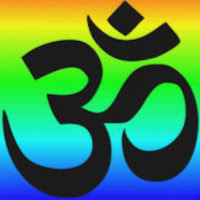DDV6
Because of the reflection of consciousness within, the intellect appears to be conscious. This understanding is of two kinds. One is called ego and the other, the inner instrument of mind.
~A
Cicchāyā’’veśato buddhau bhānaṁ dhīstu dvidhā sthitā, ekāhaṅkṛtiranyā syāt antaḥkaraṇa-rūpiṇī.
चित्-छाया – the reflection of Consciousness; आवेशतः – on account of entering; बुद्धौ – in the intellect; भानम् – there is awareness; धीः तु – and the intellect; द्विधास्थिता – is of two kinds; एका अहंकृतिः – one is the ego; अन्या – the other; स्यात् अन्तःकरणरूपिणी – is of the nature of inner instrument (mind, intellect, memory)
The intellect (thoughts) appears to be conscious on account of the reflection of Consciousness present in it. The intellect (thoughts) is of two kinds. One is the ego and the other is the inner instrument (mind, intellect, memory).
~T
बुद्धौ in the buddhi (intelligence) चिच्छाया reflection of Consciousness आवेशत: on account of entering भानं appearance (of specific knowledge) भवति happens धी: intelligence (understanding) तु and द्विधा of two kinds स्थिता is एका one अहंकृति: egoity स्यात् is अन्या other अन्त:करणरूपिणी of the nature of mind (mental faculties).
Buddhi appears to possess luminosity (1) on account of the reflection of Consciousness in it. Intelligence (buddhi) (2) is of two kinds. (3) One is designated egoity (अहंकृति, the other as mind (अन्त:करण).
~N
The reflection of Consciousness enters into the intellect,
and energises the whole “inner equipment”, Indeed, this has a twofold structure:
One part is the Ego; the other is
Of the form of the “inner instrument” (Antahkarana).
~S
Notes
The Self is of the nature of Existence-Consciousness. All objects are known to exist because of this alone. The objects, however, differ in their subtlety. Generally, subtlety is measured by its pervasiveness. The subtler an entity, the greater is its pervasiveness. Inert objects, including the body, pervade their own form. The mind’s pervasiveness extends beyond objects. The mind, being subtler than the body which houses it, is part of the subtle body. The gross body manifests the Existence aspect of the Self only. The subtle body is capable of reflecting both the Existence and Consciousness aspects, thus appearing sentient.
The mind which reflects Consciousness is of two kinds, the ahaṅkāra (ego) and the antaḥkaraṇa (inner equipment). Here, the ego does not mean pride but refers to the ‘I’ notion. The inner equipment has three types of thoughts – the mind, intellect and the faculty of memory.
~T
The Conscious Self (चिदात्मा), though self-luminous, has no manifestation, because from the absolute standpoint there is no other object which can be manifested by Consciousness. But on account of the superimposition of ignorance (अविद्या) a modification appears known as mind (अन्त:करण) which, though insentient (जड), (being the product of अविद्या) appears as conscious on account of the association of Consciousness or Ātman with it. The Ātman appears as buddhi when associated with antaḥkaraṇa. The buddhi, on account of its association with Consciousness, appears to be endowed with agency, will, etc.
~N
I don’t use the word reflection of consciousness. If you use the word, understand in this way: sūkṣma-śarīra becomes conscious, means mind becomes conscious. The consciousness obtaining in the mind is as good as consciousness. That consciousness is in the form of vṛtti.
...
Ahaṅkāra is not a bad thing. Ahaṅkāra is the inner dynamics. This is how it works. Some people say “Remove ahaṅkāra, remove ego”. I ask, but you are talking now. Have you removed ahaṅkāra? If yes, then how do you talk? How do you get up? How do you decide? This is vyāvahārika. This ahaṅkāra is Īśvara manifesting in this form. Ahaṅkāra is not a bad thing or a good thing. That has to be understood. If you are trying to remove ahaṅkāra, in the name of removing ahaṅkāra, ahaṅkāra will be sitting there! If you have the delusion of having removed ahaṅkāra, ahaṅkāra will get stronger.
~D
How does the mind become the seer? A good example here is the moon. How does the moon illumine the earth on a full moon night? The moon borrows the light from the sun. A reflection of the sunlight is formed on the moon’s surface. When the reflection is formed, the moon gets illumined and the moon becomes the illuminator of the earth. The author says that the same phenomenon takes place with regard to the mind. Sākṣī can be compared to the sun and the mind can be compared to the moon. The caitanyam of the sākṣī is formed on the mind called chāyā praveśa. Chāyāmeans the pratibimba caitanyam or ābhāsacaitanyam is formed on the mind. The moment the reflected consciousness is formed, two things happen. First, the mind becomes known, experienced and shines. Not only does the mind gets illumined, the mind also becomes the seer or the illuminator of the sense-organs. This is how the mind becomes seer 2. Because of the formation of the reflected consciousness (RC) in the mind, the mind becomes sentient as though it has its own light or sentency.
~P
Reflections of Consciousness
Call the central nervous system, the subtle body. Call this subtle body, organic chemicals and functional compounds. Call its amplification of intelligence, a reflection of pure consciousness. Call this mind and ego complex, a superimposition of ignorance upon the self.
Do not mistake the mind’s synthesis of data for a means of knowing reality. At best, the mind can lead you to the water. For the mind is an instrument of avidya, using all the wrong ways to drink in truth.
Pure consciousness may be indescribable, no matter what kind of mathematics are being used, but truth is not unknowable. Only to the mind is reality unknown. To nonconceptual being, that’s all that’s known.
~A
Translators / Commentators Legend
A: Aumdada
D: Dayananda
N: Nikhilananda
P: Paramarthananda
S: Sandeepany
T: Tejomayananda









